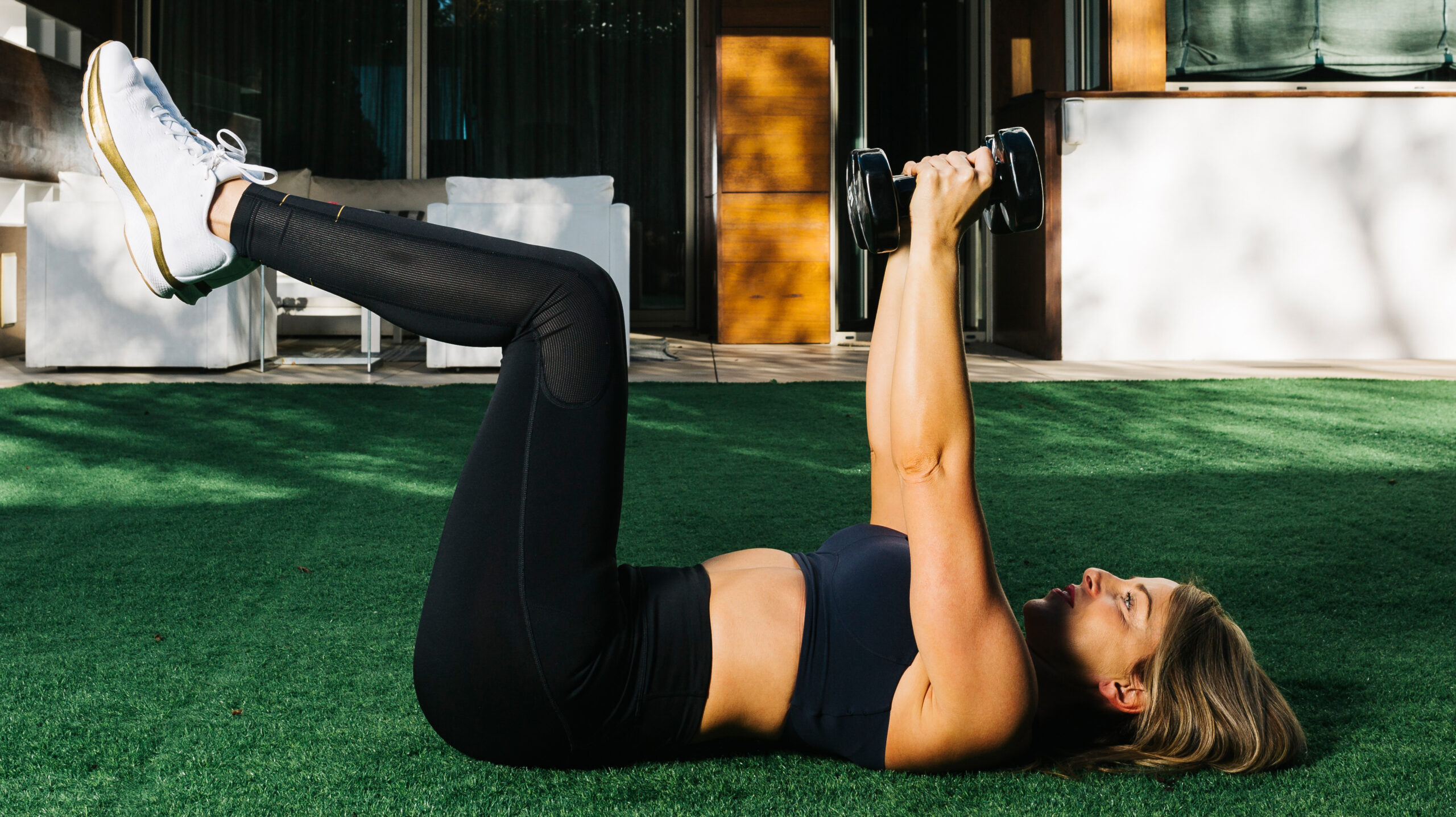Blog
I added weighted heel taps to my routine for a month, and I was shocked at the difference it made

Regaining strength after pregnancy has been a real challenge. Despite a solid regimen and lots of consistency, my core muscles haven’t returned to their pre-pregnancy abilities.
Wanting to up the ante a bit, I decided to add weighted heel taps to my current core program for a month.
Once my doctor signed off on my challenge, I started to do the exercise 10 times every day on each side.
Here are my observations after a month of weighted heel taps. Spoiler alert: my abs finally feel strong again.
How to do weighted heel taps
Watch On
You’ll need an exericse mat and a moderately heavy weight, like a dumbbell, medicine ball or kettlebell.
- Lie on your back with your spine in a neutral position.
- Hold the weight directly above your chest with your arms extended.
- Raise your legs and bend your knees to 90°, so your calves are parallel to the floor.
- Engage your core and lower one heel towards the mat, while keeping the other leg still.
- Lift your heel back to the starting position.
- Repeat on the other side.
- Continue, alternating sides with each rep, doing 10-12 repetitions of the movement on each side.
“For this core-focused exercise, I recommend starting slow, focusing on control over speed,” says Dr Sarah Cash Crawford, a physical therapist and founder of both Anchor Wellness and WAVE Physical Therapy.
“Make sure the lower back stays in contact with the floor and that you’re breathing through the movement.”
While there are some exercises you wouldn’t want to do every single day, basic core moves like heel taps are generally an exception.
“I’d encourage this exercise daily to help increase coordination and muscular recruiting,” Crawford continues. “Since it’s low-impact, it can be a great addition to a warm-up or cool-down routine without overloading the system.”

Dr Sarah Crawford is the founder of the Anchor Wellness Center and WAVE Physical Therapy and Pilates. She has over a decade of experience as a physical therapist and healthcare administrator. Her approach integrates manual therapy, Pilates-based rehab, and functional training to treat a wide range of conditions, including chronic pain, TMD, and sports injuries.
My experience
Here’s what I noticed after a month’s worth of weighted heel taps.
I had to modify at first
I woke up after my first day with a sore lower back, so I decided to scale things back a bit.
To make this exercise easier, Crawford recommended removing the weight.
“You can also reduce the range of motion or focus on one side at a time to build control,” she added.
When I implemented her suggestions, my back pain improved and I could feel better engagement of my abs.
I got stronger quickly
I modified the move for those first few days, but then it soon became too easy. A few days later I felt ready to add the weight back and start alternating between sides. Even that started to feel like a breeze.
Fortunately, there are several ways to progress the exercise.
“Allowing the weights to travel toward the ground [behind your head] would be more difficult and challenging to the core,” says Crawford. “You can also increase the duration or reps to create more time under tension.”
I started by upping my repetitions from 10 to 12 on each side.
By the end of the month, I was able to move the weight behind me as I dropped my heels. These changes made the exercise appropriately difficult again.
I feel more a lot stable
Going for a walk a week after childbirth was a huge shock. My core was complete mush, and my entire body felt completely unsupported—even a bit wobbly.
After doing weighted heel taps for a month, I finally began feeling like myself again.
I was more confident lifting heavier weights (my growing son included), and my abdominals were finally engaging properly. I’ll definitely keep doing this exercise daily.












